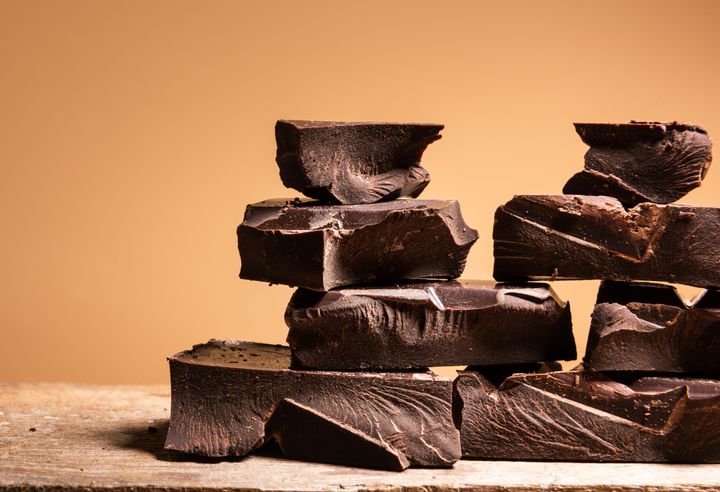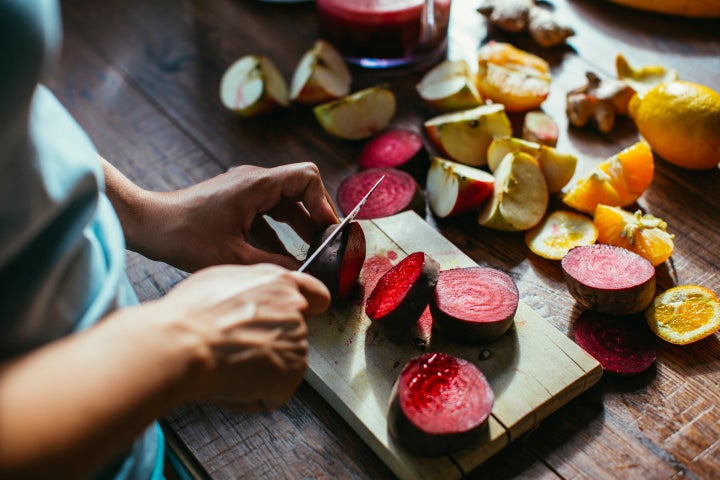
Menstrual cramps can be annoying, plan-canceling and downright debilitating. And after years of dealing with them, you’re probably pretty used to reaching for pain relievers to help minimise your symptoms.
While pain relievers are great and sometimes necessary, experts say there are ways to relieve your cramps naturally, and balance your body in a way that (hopefully) means those cramps won’t come back next month. This, experts say, can be done with food and drinks that are probably already in your fridge.
Excess oestrogen is one of the culprits behind painful period cramps, according to Leslie Northcutt, the nutrition director at 28, a wellness company that provides nutrition and fitness guidance for different times throughout a person’s monthly cycle. Research suggests that inflammation in the body also makes your periods painful, according to Serah Sannoh, a Rutgers Women’s Health Institute intern, and Dr. Gloria Bachmann, the associate dean of women’s health at the Robert Wood Johnson Medical School and director of the Rutgers Women’s Health Institute, who spoke to HuffPost jointly via email.
But Bachmann and Sannoh emphasise that this is an area of growing research, so more exploration needs to be done to find the exact relationship between food, when that food is eaten during a menstrual cycle, and menstrual pain intensity.
Bachmann and Sannoh note that in addition to thinking about what you eat during your period, it’s important to think about the entire menstrual cycle, because different nutrients are needed during different phases of your cycle.
Here’s how you should be eating to help minimise cramps.
Focus on fibre during your luteal phase
According to Northcutt, foods that are high in fibre should be consumed all month, but especially during your luteal phase, which occurs from after ovulation (which is roughly day 14 of a 28-day cycle, according to the Cleveland Clinic) to before your period begins. High-fibre foods include broccoli, kidney beans, artichokes, lentils, oats and root vegetables like carrots and beets.
Foods that contain high amounts of fibre help with constipation, which tends to occur during the luteal phase of your cycle because of an increase in the hormone progesterone, Northcutt says. And when you aren’t eliminating properly, hormones and toxins that your body wants to push out can build up and get reabsorbed instead. In the case of periods, when oestrogen builds up instead of getting pushed out, you can experience oestrogen dominance, which can cause painful period cramps and heavy bleeding, she says.
So, making sure you eat high-fibre foods in the weeks before your period can potentially help any painful cramps that normally accompany your period.
Prioritise magnesium when you begin menstruation
“Magnesium tends to be helpful because it’s a natural muscle relaxer,” says Isabel Smith, a registered dietitian and CEO of Isabel Smith Nutrition. When it comes to your period, magnesium will help relax the uterine muscles, which in turn can help alleviate cramps. You can find magnesium in green veggie juices, which will also help with hydration, Smith says.
Northcutt says that dark chocolate and cooked spinach are also great sources of magnesium – so that chocolate craving during menstruation may actually be pretty intuitive. Additionally, according to the National Institutes of Health, magnesium can be found in roasted pumpkin seeds, chia seeds, soy milk, black beans and salmon.
“These during your period are especially effective for cramps because magnesium actually acts on the serotonin reuptake inhibitors in your brain,” Northcutt says. “What happens is magnesium will block prostaglandins, which are responsible for the pain associated with cramps.”
The pain relief that comes with magnesium-rich foods means you’ll want to eat them when you begin menstruating.
Eat foods with omega-3 fatty acids all month
Bachmann and Sannoh are researching the effects of omega-3 fatty acids on menstrual cramps. The research is only in the early stages, but they have found results that suggest “decreasing the intake of pro-inflammatory foods and increasing the intake of anti-inflammatory foods may help lessen menstrual pain.”
According to Bachmann and Sannoh, one way to prioritise anti-inflammatory foods in your diet is by upping your intake of omega-3 fatty acids, which are said to be anti-inflammatory in nature and are commonly found in seafood, seeds and nuts.
Specifically, you can find omega-3 fatty acids in salmon, flaxseeds, sardines and nuts, they say. They’re also present in walnuts, seaweed, mackerel, oysters and hemp seeds.

A more plant-based diet may help, too
“Studies suggest that people observing [a plant-based] type of diet have lower rates of inflammation, and, with lower rates of inflammation there will probably be less intense menstrual pain,” Bachmann and Sannoh says.
That said, a plant-based diet, which cuts out all animal products and animal byproducts, can be a hard switch for many people. If that’s the case for you, that’s OK.
Eat foods that block oestrogen
Certain foods act as aromatase inhibitors, which means they block excess estrogen, Northcutt says.
“Estrogen dominance is a top culprit of PMS,” she says. “Excess oestrogen can increase your inflammatory response and also make you more susceptible to pain.”
Foods like citrus fruits, spinach, mushrooms, beef liver, dark chocolate and cacao powder all help lower the level of oestrogen in the body, which can help your periods be less painful.
Be sure to hydrate
Smith said it’s important to focus on hydration all throughout the month, but especially during and around your period. This is because water is a “natural muscle relaxer, so [it’s] helpful for cramping,” she says.
In fact, dehydration is known to lead to muscle cramps, which is why on hot days it’s common for athletes to develop muscle cramps while exercising, according to the Mayo Clinic.
It’s best to stick to non-sugary drinks for hydration, since sugar can lead to dehydration, Smith notes.
During your period, avoid omega-6 fatty acids
“Omega-6 fatty acids are popularly known as pro-inflammatory and these foods have been associated with triggering painful menstruation,” Bachmann and Sannoh says.
Omega-6 fatty acids are commonly found in red meats and processed foods like french fries.
“Research overall suggests that consuming diets high in omega-6 fatty acids increases the presence of pro-inflammatory prostaglandins, which may lead to increased menstrual cramping,” Bachmann and Sannoh says.
But omega-6 fatty acids should not be avoided at all times, because a balance of omega-3 and omega-6 fatty acids is necessary for our bodies, they note.
Even if you can’t commit to all of this advice, certain dietary changes can help your cramps
It may feel overwhelming to have to alter your entire diet to (hopefully) have less painful menstrual cramps, but you can try out aspects that work for your lifestyle.
“Balance is best,” Northcutt says “Everyone knows if you want to be healthy you have to work out [and] eat clean, but it’s good to have little tips and tricks on how to live a balanced life. No one’s perfect.”
This can mean, say, focusing on hydration and fibre-rich foods in the days before your period, or reaching for some anti-inflammatory dinner ingredients during your period. You can still have whatever you’re craving, too: Just try to balance it with some ingredients that help alleviate your cramps.